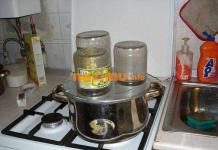Most novice aquarists prefer viviparous, beautiful small-sized nimble guppy fish. Hardy and unpretentious fish are able to survive even in the most extreme conditions. There are, of course, those who do not like these fish because of their size. But mostly they are turned on because of their peaceful nature in relation to their roommates. At some points, this trait plays against them. So, cocky neighbors can offend the little inhabitants of chic tails.
Caring for a guppy will not be a hassle or complication. For small fish, the volume of the aquarium does not matter, they will live perfectly in the smallest versions. However, there is a question about the humanity of such a fish keeping.
When choosing neighbors, it is important to take into account not only the interests of the guppies, but also the "settlers" themselves. Therefore, make sure that the water balance is ideal for all pets.
Ideal Guppy Aquarium:
- Temperature 23-26 degrees;
- Hardness from 10 to 25;
- Acidity 6.5-7.5;
- 2 liters pure water per individual;
- The presence of plants and shelters;
- Dim additional lighting;
- Change one third of the water weekly.
A filter device, pump and air compressor are optional. However, this figure is very relative and will depend on the population of the aquarium. The more residents, the higher the need to purchase these devices.
Guppies can use any food as food. This is another plus in the piggy bank of their relevance. They are omnivores, and will gladly devour whatever they are given. Of course, it is not advisable to feed only dry mixtures, as they will ultimately lead to an imbalance of trace elements in the fish body and the aquarium as a whole. Supplement your diet with bloodworms, daphnia, cyclops and tubifex. Guppies will also be delighted with vegetable feed. Please note that these fish are prone to overeating, so dose the amount of food carefully.
Compatibility with other fish
Due to the peaceful nature of pets, it is worth considering the possibility of keeping them separate from other fish, but if you still want to make an aquarium with many types of fish, then carefully select your neighbors. In no case should they be planted with predators.
Guppies get along well with some catfish, gourami, tetrami, battles and some species of haracin fish, corridors are also suitable. But in practice, it has been proven that even among them there are cocky individuals who strive to offend guppies.

The most popular options:
- Scalars. Most novice aquarists believe this is the best option. In fact, he is successful until the scalars grow up. Therefore, the belief that shy scalars are harmless is fundamentally wrong. However, there are cases when they coexist peacefully with each other in huge aquariums.
- Swordsmen. These fish are not the most suitable option, since adult swordsmen often bite neighbors and eat their offspring. You can only start them together if you have taken care in advance to grow dense thickets of plants in which both fry and adult fish can find refuge.
- Barbs. Barbs are dangerous for beautiful guppy fins. Because the bright colors attract the attention of this fish, and they tend to bite the guppies. Look out for other fish that won't be as aggressive.
- Goldfish. This option is strictly prohibited. gold fish can kill a small guppy, so consider other options.

Perfect Compatibility:
- Danio;
- Tetras;
- Botia;
- Cockerels;
- Iris.
Thus, be careful about your neighbors for such gentle and defenseless fish. Leave stereotypes behind and carefully study the approach, both to the owners of the aquarium, and to their neighbors. Guppies get along well with peace-loving fish, but categorically do not accept fighters. Pay close attention to the behavior of all pets. If you notice aggression from another fish while feeding, then it is worth trying to increase the dose of food. Is it hunger or lack free space can turn ideal neighbors into worst enemies, leading to injury and stress. When choosing neighbors, read as much information as possible and consult with other breeders about whether the new inhabitants will eat the fry of the viviparous guppy.
Guppy compatibility with other fish
If you are not satisfied with an aquarium that is inhabited only by guppies, you can try to add other small fish that are not predators to them. Neons, some types of catfish ( speckled catfish, catfish-sticking), gurus, battles, tetras, small species of haracin fish, different kinds corridors can get along well with their neighbors. But it is possible that one representative of these fish will show aggression towards small cohabitants.
Scalar and guppy compatibility... Some inexperienced aquarists are confident that the existence of these two fish in the same body of water will not lead to anything bad. They are convinced that peaceful and shy sklyars will become excellent neighbors for little darlings. But this is so only if the guppies' neighbors are still fry.
Guppies and Swordsmen Compatibility... These fish are not always ideal neighbors. In some owners, they get used to, and in some they are enemies. After all, there are times when swordsmen bite their neighbors, and also eat their cubs. It is advisable that there are many vegetation in the aquarium, they will help the fish to hide.

Compatibility of barbs and guppies... Fish are not recommended to be planted in common aquarium... After all, the tail fins with a bright color of the latter will become a target for the bites of the former. Therefore, you should pay attention to fish that are less aggressive than barbs.

Guppy and goldfish compatibility... These two species cannot be planted in the same aquarium. This can even lead to the fact that the life of a small, harmless guppy is threatened. Therefore, it is better to choose another candidate for her for a good cohabitation.

Guppies are exactly the fish that beginner aquarists should pay attention to in the first place. They are quite unpretentious to the conditions of maintenance, therefore they are distinguished by a special survival rate. These adorable, small creatures with a large tail instantly fascinate the eyes of any person with their graceful movements, as well as extraordinary beauty. But in order for the fish to live in a calm environment, not to hide from aggressive neighbors, think carefully about who they will be in the aquarium with. Or it might be better to leave the guppies alone.
What are the best friends of neons?
Neons are small freshwater fish of the Kharacin family. In the wild, they are very active and nimble, they can quickly hide from predators, maneuvering among dense plants. Body dimensions reach 3 cm in length, life expectancy depends on the temperature of the water: from 1.5 to 3 years. Behavioral characteristics: due to a peaceful disposition, they can get along both with each other in a flock and with other types of fish. Guppies and neons, petsilia and neons, catfish and neons get along well in one aquarium. This compatibility is beneficial for novice aquarists, since these types of fish will definitely not harm each other.


What else needs to be considered for compatibility? Males of neons are brighter in color than females, the contrast of the scales depends on the species. But one thing unites them - a horizontal strip passes through the body, which glitters with a "neon" flicker even in the dark. This feature can be attractive to predatory fish and those who do not welcome more beautiful neighbors next to them. So settle a flock of neons of 5-7 fish or more in a spacious tank with shelters so that in case of unforeseen attacks, they can hide in time.
Settlement rules in a shared aquarium
With whom neons can and cannot get along
Unpretentious gourami are great neighbors
Character
Are they compatible with each other?
About compatibility with representatives of other species
Compatibility criteria
To understand whether compatibility between species is possible, you need to familiarize yourself with the criteria for full, partial compatibility and incompatibility. With full compatibility, you can safely observe the life of the fish, with partial there are threats of rivalry, in the absence of compatibility as such, the fish do not need to be settled in one aquarium at all.
Pairs of gourami and fish, compatibility:
- Scalar and gourami: fully compatible
- Barbs: partially compatible
- Cockerels: incompatible
- African cichlids: incompatible
- South American cichlids: incompatible
- Corridors: Fully Compatible
- Danio: Fully Compatible
- Discus: partially compatible
- Loach: partially compatible
- Goldfish: incompatible
- Gourami: partially
- Guppy: partially
- Koi carps: incompatible
- Botia: completely
- Mollies: completely
- Astronotus: incompatible
- Pecilia: completely
- Plekostomus: completely
- Iris: completely
- Parsing: completely
- Labeo: completely
- Swordsmen: completely
- Tetras: completely
- Acne: partially
- Piranhas: incompatible
- Shrimp: incompatible
- Floating aquarium plants: fully
See also: How to care for chocolate gouras?
Who do the cockerel fish get along with in the common aquarium?
Rules for keeping Betta splendens in a shared tank
Description of compatibility with specific fish species
Cockerels and guppies - it is believed that guppies and bettas live in water with different parameters, therefore they are only conditionally compatible. There have been examples of successful compatibility, but the risk is not always worth it. Males can chase guppies throughout the aquarium until their fins are ripped off. Guppies can live at a temperature of 18-28 degrees, although 22-25 degrees is more permissible for them. The diet of both fish is the same, so some breeders did not have any difficulties in keeping.
Scalaria and betta - good compatibility, provided there is a spacious reservoir. These fish practically ignore each other, without attracting attention to themselves. The cockerels are more likely to fight among themselves than to bother the scalar. However, during spawning, scalars become more aggressive, and can drive all neighbors, including labyrinths. Set up lots of shelters and plants in your nursery to protect everyone.

Gourami - all species are close relatives of cockerels, so compatibility can be excellent. Gourami are curious creatures, tenacious and active, they also feed, breathe with gills and atmospheric oxygen. The cockerels do not bother them, sometimes it is the other way around. Place them together in a tank of at least 70 cubic liters. All Macropods have the same enemies: they are large and predatory fish, with which they should not be settled.
See the cockerels with the gourami.
Mollies and cockerels can live in an aquarium, since they tolerate the same water parameters. But there is one fact - mollies prefer slightly brackish water, but bettas do not. A temperature of 24-27 degrees is optimal for keeping. At low temperatures, both fish start to get sick. Molly are viviparous fish that must breed in a separate, spawning tank so that no one destroys their fry.

Botia are aggressive aquatic organisms alone, so they can only be housed in a flock of 4-7 fish. In the aquarium, the battles are small, reaching only 8 cm in length. Peaceful, they can be kept with the same neighbors, provided they have space and cover. The cockerels practically do not conflict with them.
Corridors - Suitable for many fish neighbors. They have a calm disposition, interesting body color, and bring many benefits. If the cock doesn't finish eating, the corridor will pick him up. Catfish swim at the bottom of the aquarium, the cockerels only sleep at the bottom. Compatibility between them is proven, bettas rarely disturb the corridors. Corridors, like labyrinth corridors, can use atmospheric air for breathing. Such a pet can survive under critical conditions. Catfish do not tolerate salt and organic matter, like betta. Changing the water in the general aquarium should take place once a week.

Choosing aquarium neighbors for scalars
Compatibility chart: scalars and other species
With what species do these pets live peacefully? In order to avoid mistakes in settling, their compatibility with other fish should be considered. As a rule, they get along with many peaceful species, but there are exceptions to the rule.
Look at the shared fish tank.
Barbs are small fish that strive to pinch the beautiful fins of any neighbors, be they scalars or other beauties. Sometimes they live peacefully, but Sumatran barbs, cherry barbs, tiger barbs can constantly flutter beautiful angel cichlids. They demonstrate their superiority and play catch-up or hide-and-seek, which leads to stress. Shelter or resettlement is essential. Barbs, although cute creatures, are too annoying. In addition to them, even gourami, guppies or labeos can be very unbelievable.
Cichlids from Africa and South America - although they are close relatives of scalars, they can show territorial aggression and predatory behavior. Cichlids are single fish, or "family men", not many breeders manage to keep them in peace and harmony with other aquatic inhabitants. Scalarians are uncomfortable with them, so settlement is possible only with individual compatibility, which is checked at a young age.
Males are good neighbors for small cichlids. They can live on their own. Male bettas are more likely to conflict with each other than with other fish. One caveat - during spawning, the female and male scalar are aggressive towards the males, if there is nowhere to relocate everyone, organize additional shelters in the tank.
The catfish corridor - they live with almost everyone without conflicts and claims, scalars are also no exception. Catfish live in the lower layers of the water, scalars - in the middle. They can ignore each other without interfering with living and eating.
Danio - if the fish grew together, very good. If danios are settled with them as new neighbors, they will be taken for food. It will not be possible to eat everyone, they will arrange unpleasant endurance tests for them, proving their superiority. Danios swim in the upper layers of water, and scalars get them well. You can set up a lot of thickets, shelters, a spacious tank for everyone to hide. For small fish, constant stress is extremely harmful, so watch how the cichlids react.
Goldfish - such luxurious fish can be kept in proportion to Carp. And with scalars, the content is unlikely to be successful. Goldfish live in cool water, while cichlids live in warm water. In addition, goldfish and scalars are incompatible in nature - a more active cichlid will cut off the fins of such a neighbor. And another important factor - goldfish quickly pollute the water, while cichlids are very fond of cleanliness.

Guppies are small ornamental fish. They get used to scalars from a young age. But as they mature, cichlids can harm guppies. In adults, predatory instincts wake up, which is extremely unpleasant for a guppy - she is small, bright and beautiful. If the question arises - where did the guppies go? The answer is obvious - they were eaten by scalars.
Look at the confrontation between gourami and scalar.
Mollies are viviparous fish of colorful color. Keeping with cichlids of this type will be successful if they grow up together. Sometimes mollies gnaw the fins of the scalar. Over time, they get used to each other, but with prolonged conflicts it is better to keep them separately.

Thornsia - omnivorous fish small size... Naturally, scalars will be perceived ambiguously, or rather, as food. According to the conditions of detention, they are suitable for each other, they eat almost the same food. But thorns can be physically harmed by cichlids. Compatibility can be called relative, because there must have been cases when thorns and scalars got along. However, thorns are small aquatic organisms, large neighbors are dangerous for them.
Discus - These aquarium fish make good companions for cichlids. The scalar and discus fish have similar living conditions and diet. Even their body shape is slightly identical - it is difficult for discus and scalars to collect food from the bottom due to the disk-shaped symmetry. Therefore, both those and others will be able to eat from a special feeder. The differences between them are that discus fish are schooling fish, they feel comfortable in a flock of 5-6 individuals, and scalars swim in pairs, they love a wide space. Having a large reservoir for both types will be a big plus.

Shellfish and crustacean compatibility
Gourami - compatibility with other fish
Compatibility of aquarium gourami fish within a species
Naturally, fish of one species will get along better with each other than with representatives of another species. However, with gouramis, things are not so simple. They have very strongly developed rivalry between males for the attention of females. This fight can be very dangerous, no better than the attack of aggressive fish of another species. Based on this, at least two or three females per male should be put into the aquarium. In this case, everyone will remain whole and happy.
The peculiarity of gourami is thin and long fins, which attract the attention of aggressive fish.
Gourami compatibility with other fish
These fish are small enough, so they need to be wary of large predators. However, not only them: for some reason, some small fish also dislike gourami and do not mind to spoil them pretty much. So, we cannot talk about the compatibility of gourami and cichlids, cockerels, parrots, astronotus, goldfish.
It is also difficult for them to get along with shrimps, discus, we are not talking about the compatibility of gourami and guppies. With these fish, there are no such extremes in confrontation, but the atmosphere in the aquarium will clearly be turbulent.
However, there are many other fish that gourami have excellent compatibility with in the confined space of the aquarium. We can talk about the compatibility of gourami and neons, as well as zebrafish, bots, barbs, swordtails, tetras, catfish, minors. Good compatibility of scalars and gourami.  In general, gourami are very peaceful fish, they will never chase fry, rarely go into conflict with representatives of another species. They only eat gourami small feed... Females gourami feel most comfortable in the vegetation of the aquarium and only occasionally float up to get air bubbles. Males can be aggressive, but only within the species and because of the female. The main drawback of these fish is that they are very poor at defending themselves, which is why they often become victims of predators.
In general, gourami are very peaceful fish, they will never chase fry, rarely go into conflict with representatives of another species. They only eat gourami small feed... Females gourami feel most comfortable in the vegetation of the aquarium and only occasionally float up to get air bubbles. Males can be aggressive, but only within the species and because of the female. The main drawback of these fish is that they are very poor at defending themselves, which is why they often become victims of predators.
Gourami are great for home aquariums: they are beautiful, unpretentious and peaceful. But if the owner wants to save the lives of these handsome men, you need to take care of good neighbors for them in advance.
Angelfish: compatibility with other fish

Scalaria (Latin "angel fish") attracts with its gracefulness and unusual shape. These pets are loved by many aquarists for their peculiar graceful appearance, original colors, meek, peaceful disposition. They are considered the most popular aquarium fish of the cichlov family. What types of these inhabitants of domestic water bodies are most famous, what are the conditions of their maintenance, with whom these representatives of cichlids feel comfortable in the neighborhood, we will consider further.
What are they - scalars?
These representatives of the underwater fauna are native to South America, where their favorite habitats are slowly flowing or even stagnant waters of local reservoirs, densely overgrown with reeds.
The flat, as if flattened from the sides, the shape of the body of the scalar allows it to easily move between vertically growing stems of aquatic flora. Here they are comfortable: they can easily hide from their predatory counterparts, sweep away eggs in silence. They usually live in small flocks of 20 or more individuals.
 The body shape of the scalar, unusual for fish, resembling a crescent moon, was formed by stretching the dorsal and anal fins, while the fins on the abdomen were transformed into threads that feel and recognize the surrounding objects.
The body shape of the scalar, unusual for fish, resembling a crescent moon, was formed by stretching the dorsal and anal fins, while the fins on the abdomen were transformed into threads that feel and recognize the surrounding objects.
The natural habitat has formed the color of the scalar: the light-silver background of the body of the fish is crossed by vertical stripes of a dark color, constantly changing saturation depending on the degree of illumination. These transverse stripes are nothing more than a protective coloration of the fish, making them invisible in the reed. Only the eyes are sharply accentuated by bright red spots.
These aquarium pets are characterized by:
- graceful manner of movement;
- unpretentiousness;
- the ability to coexist with non-aggressive fish species;
- reverent care for their offspring.
Varieties of exotic fish
We create the right conditions of detention
Who can be a neighbor of a scalar?
![]() It cannot be said that the scalar fully corresponds to its translated name of the angel fish: it, like many cichlids, is governed by predator instincts.
It cannot be said that the scalar fully corresponds to its translated name of the angel fish: it, like many cichlids, is governed by predator instincts.
An attempt to add this fish to some other aquarium inhabitants does not always end successfully. Simply put, for example, scalars can easily eat every little thing, and there are some restrictions for adult representatives of other breeds.
Large breeds of fish-aggressors themselves will attack the scalar. You can try to hook them up with fish that can quickly hide, for which our representatives of cichlids will be dangerous only at night.
Based on the foregoing, these angelic pets are compatible with:
- catfish;
- pseudotrophies;
- zebrafish, which will need to be able to dodge and quickly hide;
- with platinum on a partnership basis;
- labeo and tetras, if grown together.
In a word, everything about the compatibility of different breeds of fish is relative. Scalaria from the cichlov breed. A priori, this means that she is a predator for which every small fish is food. And any larger fish with the same predatory inclinations will not miss the opportunity to ruffle the delicate antennae of the scalar. It probably makes sense, when buying this cichlid, to agree with the seller about the possibility of returning it to the pet store in case of such an incompatibility.
Guppies are very peaceful viviparous fish and will get along with any fish. But to choose a neighbor for a gupik so as not to offend them is already more difficult, and you need to approach this issue seriously. Since gupeshki are very peaceful and small in size, many inhabitants of aquariums can offend them, drive them around the aquarium, pull them. And sometimes even, there can be fatal cases for guppies.
So, so that there are no annoying cases and your guppies are safe, and feel comfortable, we will analyze such a question as the compatibility of guppies with other types of fish.
Of course, the simplest and ideal option is to contain only guppies, you can choose from among a wide variety of species of gupies exactly the color scheme that suits you. There are a lot of colors and colors of guppies. And if you put guppies with different colors and colors in the aquarium, then the aquarium will look very beautiful and impressive.
But still, if you decide to combine guppies with other fish, we choose neighbors.
Guppies are fully compatible with neons
Guppy compatibility, which fish get along with them?
Some of the most suitable fish are:
- battles
- cockerels
- platies
- iris
- molinesia
- analysis
- swordsmen
- tetras congo
- neons
- zebrafish
- thorns
- small species of haracin fish
Most compatible with catfish:
- catfish plectostomus
- catfish corridors
- taracatum
- small medium-sized catfish
You can also try to combine with:
- gourami
- barbs
- eels
- labeo
Guppies are not at all compatible, and who cannot be hooked up to guppies:
- discus
- pseudo discus
- African cichlids
- scalars
- Koi carps
- goldfish
- astronotuses
- South American cichlids
Also, do not combine guppies with shrimp because some types of shrimp are small and guppies can perceive them as food and will eat them. And there are such types of shrimp that can be the other way around.
In general, compatibility is a relative concept. For example, a sword-bearer. Almost everywhere it is written that the swordsman and the guppy are compatible, but in many cases this is not the case. Swordsmen can nibble on guppies by eating their tail or fins. Also, during spawning, a male swordtails can drive guppies around the aquarium. The situation is the same with the cockerels. They, too, can offend guppies during spawning. It often happens that incompatible fish species get along well with gupiks.
You can try to combine guppies, for example, with scalars. But you need to start both those and others with fry, then they get used to each other.
You need to understand that the compatibility of fish depends not only on the nature of the fish, much depends on the volume of the aquarium. If the aquarium is overcrowded, territorial discord can arise. Also, when combining fish, take them into account. temperature conditions water in which they are more comfortable to live, as well as pH and acidity.
Try to choose neighbors for guppies of similar size and build. The more fish there is for the guppy, the more likely it will offend your guppy.

There are many conflicting opinions on the compatibility of guppies and gouramis in the same aquarium on different sites. Some say that guppies and gouramis are constantly competing and fighting, others have best friends, still others argue that it is a matter of chance. There are also various conflicting compatibility tables. aquarium fish which I would not like to focus on. I have tried to make an extract of the scattered information and present it to you. I do not pretend to be the ultimate truth in the matter of compatibility between guppies and gourami, I invite everyone to make an independent conclusion.
Guppies are not compatible with gouras, because a conflict can arise between them, including predation.
Reasons for the conflict: bright color and lush fins, which the fish will want to nibble, as well as the small volume of the aquarium.
Opinion 2. Compatibility of guppies and gourami is random
The compatibility of guppies and gourami in the same aquarium is random and depends on the nature of the individual fish.
Gourami are extremely peaceful fish with rare exceptions.

Marble gourami are more aggressive than others. Solar (gold) and pearl gourami more peaceful.
Adult guppies and gouramis get along well, but gouramis will eat guppy fry. If you don't want fry, why not?
Opinion 3. Guppies and gourami are great neighbors
Honey gouramis are quite compatible with guppies. They are larger than them in size, but do not eat guppies or pull their fins. They like peace and quiet. Gourami are gentle calm fish that avoid conflicts and reproduce periodically.
I had 8 gouramis and a whole bunch of guppies. They paid no attention to each other.
If gourami and guppies grow up together, this guarantees them a peaceful neighborhood.
Output
Again, I propose to draw a conclusion on your own.
What would I do? I would choose a larger aquarium, so that the guppies and gouramis do not have territorial conflicts. Arrange enough plants and hiding places for the fry. I would listen to the advice and go for a less aggressive type of gourami. If possible, I would take the younger fish so that they grow up together and get used to each other.
Thank you for the attention!
PS: I am writing in this format for the first time, it would be interesting to know the opinion of readers about the usefulness of such information. Rate using the stars below or leave a comment.
Be careful when matching guppy tank mates as many fish prefer to use them as a tasty snack. The work of selecting neighbors who will neither bother the guppies nor eat them is quite painstaking. You need to make sure that the fish does not grow too large, for example, you should not add scalars to them, which can easily eat guppies or nibble on their beautiful long flowing fins.
- There is one more thing to consider when choosing neighbors for guppies. They have very long flowing fins that resemble those of cockerels, and many fish like to nibble on these fins. They will not eat the guppies themselves, but will pluck their fins. Be very careful.
Use the following list of fish that might be neighbors in a guppy aquarium.
- Guppies are viviparous fish that give birth to miniature fry, rather than spawn. There are other viviparous fish that can live with guppies due to their similarities in water quality requirements and breeding methods. One of these compatible species is the platy, which are beautiful in themselves and are very brightly colored. They perfectly match the description with guppies: interesting, hardy, beautiful, brightly colored, easy to breed. Swordsmen are another species viviparous fish compatible with guppies. Both those and other fish are inexpensive. But be careful, not all viviparous are compatible with guppies. For example, you should not add large mollies to guppies.
- Honey gouramis, as strange as it may sound, are quite compatible with guppies. They are larger than them in size, but do not eat guppies or gnaw their fins. They like peace and quiet, they are timid and shy fish. They avoid fights, aggression and reproduce periodically. Gouramis are more expensive than guppies and platies, but nothing is cheaper than the latter. All other fish will cost more, but not much.
- Neons and tetra cardinals are also great tank mates for guppies. But they have several disadvantages: they are sensitive, do not survive in a newly set up aquarium, require special attention, and rarely reproduce. These fish are not recommended for beginners.
Try using other creatures. There is no need to add other fish to the guppy. You can put glass shrimps with them. They are great for guppies and work as natural aquarium cleaners, they are cute, wary and peaceful. These creatures are a useful, hardy and recommended addition to any aquarium.
Add bottom dwellers. Guppies prefer to swim in the upper and middle layers of the water. You will balance your aquarium by adding bottom dwellers. You can use the catfish of the corridors, they are peaceful and only swim along the bottom, without touching other fish.



































